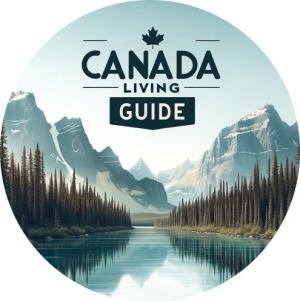Buying Car Insurance in Canada: What Every Newcomer Needs to Understand
Diving into the world of buying car insurance in Canada doesn’t need to be a complex journey.
Whether you’re a newcomer or an immigrant, understanding how to secure the right coverage for your vehicle is crucial for your peace of mind and safety on the road.
This friendly guide is designed to simplify the essentials of auto insurance, providing you with clear information about various types, premiums, how and where to buy, and other tips.
Let’s embark on this adventure together, ensuring you’re well-informed and ready to make the best decisions for your driving experience in Canada.

Understanding Car Insurance in Canada
Auto insurance in Canada is a mandatory requirement for all vehicle owners and is regulated at the provincial and territorial levels.
This system ensures that all drivers have financial protection against physical damage or bodily injury resulting from traffic collisions, as well as liability that could arise from these incidents.
If you’re involved in a car accident, your insurance policy may also offer coverage for all passengers and any other individuals implicated in the incident.
It’s important to note that the specifics of auto insurance policies, including coverage requirements and the process for filing claims, vary significantly across provinces and territories.
For instance, provinces like British Columbia, Saskatchewan, Manitoba, and Quebec operate public auto insurance systems, whereas the rest use private insurers. This fundamental understanding is helpful in navigating the initial steps towards securing auto insurance.
Types of Auto Insurance Coverage
In Canada, auto insurance coverage is divided into mandatory and optional categories.
Mandatory coverage encompasses several crucial components.
Third-party liability offers protection in instances where another individual is injured or their property is damaged due to an accident with your vehicle. This basic insurance doesn’t cover the cost of repairs to your vehicle.
Subsequently, accident benefits provide medical and additional necessary benefits if you sustain injuries in a collision. It is mandatory in all the regions except for Newfoundland and Labrador.
Moreover, uninsured automobile coverage ensures your safety against encounters with uninsured drivers and hit-and-run scenarios, completing a comprehensive protective framework for motorists.
Optional coverage, such as comprehensive and collision, offers further protection.
Comprehensive covers non-collision-related damage to your car, like theft or vandalism, while collision pays for damages to your car resulting from an accident. The latter one may be included as part of mandatory insurance coverage in some regions. Understanding these coverages is crucial for selecting a policy that meets your needs and budget.
In addition to the above, you can supplement your car insurance policy with endorsements and therefore broaden your coverage. This includes renting a car during the repair of your vehicle, emergency roadside assistance, accident forgiveness, family protection, etc.
Who is Eligible to Get Auto Insurance?
To obtain auto insurance in Canada, you must first meet certain eligibility criteria, which typically include holding a valid driver’s license and being a resident of the province where you are applying for insurance.
The process involves providing personal identification, vehicle registration details, a summary of your driving history, and, for newcomers, potentially international driving records.
This information helps insurers assess your risk level and determine your premium. It’s advisable to gather all necessary documents in advance to streamline the application process.
Contacting insurance companies directly or using online comparison tools can help you explore various quotes.
Factors Influencing the Cost of Auto Insurance
Several key factors determine the cost of auto insurance, impacting how insurers calculate premiums. Understanding these can help you navigate your policy choices more effectively:
- Driving Record: A clean driving record without accidents or traffic violations can significantly lower your insurance premiums. Insurers view a good driving history as an indicator of lower risk.
- Type of Vehicle: The make, model, and year of your vehicle affect insurance costs. High-performance vehicles, luxury cars, and those with a higher likelihood of theft generally come with higher premiums.
- Location: Where you live and drive plays a crucial role. Urban areas with dense traffic tend to have higher rates of accidents and theft, leading to higher premiums compared to rural areas.
- Usage: How much you drive also impacts your insurance costs. The more kilometers you rack up, the higher your perceived risk, which can increase your premiums. The intended use of your vehicle, whether for personal or business purposes, also matters.
- Coverage Amount: The level of coverage you choose directly influences your premium. More comprehensive policies with lower deductibles cost more upfront but provide greater protection in the event of a claim.
- Age and Experience: Younger drivers and those with less driving experience often face higher premiums due to the higher risk of accidents statistically associated with these groups. My son, who is a new driver and was added as an additional driver to my insurance, just received a quote of $1,800 per year (2024).
- Credit Score: In some regions, your credit score may influence your insurance rates, with a higher score potentially leading to lower premiums.
How to Buy Car Insurance in Canada
You can purchase car insurance through several channels, ensuring you find coverage that best fits your needs and preferences:
Directly from Insurance Companies: Many insurers offer the option to buy directly from them, either through their websites, over the phone, or at their physical offices. This direct approach often allows for quick quotes and policy purchases.
Through Insurance Brokers: Brokers work with multiple insurance companies and can compare different policies to find the best coverage and rates for your specific needs. They provide personalized advice and assistance throughout the insurance process.
Insurance Agents: Unlike brokers, insurance agents typically represent one insurance company and sell policies on behalf of that insurer. They can provide detailed information about their company’s products and help you through the application process.
Online Insurance Marketplaces: These platforms allow you to compare quotes from different insurers in one place. After entering your information, you can see various policy options and prices to make an informed decision.
Financial Institutions: Some banks and credit unions offer car insurance to their customers, sometimes at discounted rates for banking customers or members.
Top Companies That Sell Car Insurance
When looking for car insurance in Canada, both residents and non-residents have a wide range of options. Insurance companies vary in size, coverage options, and specialties, offering different advantages depending on your needs. Here’s a look at several popular companies in Canada:
- Intact Insurance
- Desjardins Insurance
- Aviva Canada
- TD Insurance
- Allstate Canada
- The Co-operators
- Wawanesa Insurance
- Economical Insurance
- Belairdirect
- Johnson Insurance
How to Save on Auto Insurance
Reducing your auto insurance premiums involves a few strategic approaches:
- Shop Around: Compare quotes from multiple insurers to find the best rates for the coverage you need. Don’t hesitate to switch providers if you find a better deal.
- Bundle Policies: If you have multiple insurance policies (like home and auto), bundling them with the same provider can often secure you a discount.
- Increase Your Deductible: Opting for a higher deductible can lower your premium, but make sure you can afford the out-of-pocket cost in case of a claim.
- Drive Safely: Maintaining a clean driving record is one of the most effective ways to keep your premiums low over time.
- Use Winter Tires: In some regions, insurers offer discounts for using winter tires, recognizing the reduced risk of accidents in cold weather conditions.
- Take a Driving Course: Completing a certified driving course can not only improve your driving skills but also qualify you for discounts on your insurance.
- Review Your Coverage: Regularly review your policy to ensure it still meets your needs. You may find you’re paying for coverage that’s no longer necessary.
- Install Eligible Security Devices: Installing approved security devices, like anti-theft or recovery systems, in your vehicle may qualify you for discounts.
Understanding Car Insurance Costs in Canada: What to Expect
The cost of car insurance in Canada can vary significantly depending on the province due to differences in insurance systems and regulations.
For example, drivers in British Columbia, under the public insurance system of the Insurance Corporation of British Columbia (ICBC), faced some of the highest premiums in the country, with average annual costs around $1,832.
In contrast, drivers in Quebec enjoyed some of the lowest rates, with an average annual premium of approximately $717, thanks to a mix of public and private insurance systems.
Ontario drivers, dealing solely with private insurers, also experienced high rates, with averages around $1,505 annually.
Alberta’s drivers saw premiums averaging about $1,316 per year. These figures highlight the regional disparities in car insurance costs across Canada, reflecting the diverse regulatory and risk assessment landscapes.
For the most current and detailed data, consulting specific provincial insurance regulators or conducting a market survey would provide the most accurate and up-to-date information.
To share a personal anecdote, over twenty years ago, we found ourselves navigating the Canadian roads for the first time. Eager to embrace mobility, we acquired an aged Ford Taurus (we called it Rust-i), a humble vehicle that cost us merely about $300. It was a modest investment, or so we thought, a mere stepping stone in our new Canadian life.
However, the real shock came not from any mechanical failure or hidden defect of this old car, but from the staggering cost of insuring it. When we approached the task of securing basic car insurance, we were blindsided by the quote: $270 per month! This figure was nearly equal to the car’s purchase price, and it demanded payment every single month.
This revelation hit us like a cold splash of water, highlighting the harsh reality of insurance costs for newcomers in Canada.
Additional Insights About the Car Insurance
Requirements and Fines
- In Ontario, you’re required to carry proof of auto insurance, typically provided by your insurer as a ‘pink card’ or electronically. You can legally display this proof on a mobile device if preferred.
- The law mandates that proof of auto insurance must always be present in your vehicle, even when it is being driven by someone else with your permission.
- Driving without valid auto insurance could lead to the suspension of your driver’s license and the impoundment of your vehicle.
- In Ontario, first-offence penalties fall between $5,000 and $25,000, with fines for subsequent offences reaching up to $50,000. Such infractions also lead to substantial increases in future insurance premiums.
Claim Process
Familiarizing yourself with the claim process is essential. In the event of an accident, you should promptly inform your insurer, providing a detailed account of the incident along with any required documentation.
An insurance adjuster will assess the damage to determine the compensation for repairs or injuries. Understanding this process and your policy’s specific requirements can significantly aid in navigating a claim smoothly and efficiently.
Renewing and Changing Your Auto Insurance
Auto insurance policies in Canada are typically renewed annually. Your insurer will send a renewal notice, which may include updated rates based on your driving record and other factors.
If you wish to change insurers, perhaps to take advantage of better rates or coverage, it’s crucial to ensure there’s no gap in your coverage during the transition.
Shopping around before your renewal date can give you a clear picture of your options and help you make an informed decision.
Car Insurance for Non-residents
Non-resident car insurance in Canada is essential for individuals temporarily living in the country, such as international students or workers.
To obtain coverage, non-residents must have a valid driver’s license from their home country or an International Driving Permit and may need to provide documentation regarding their stay.
While insurance options include mandatory third-party liability and optional comprehensive and collision coverage, premiums may be higher for non-residents due to the lack of a Canadian driving record.
It’s advisable for non-residents to consult with insurance companies or brokers to find suitable coverage, keeping in mind that shopping around for quotes and understanding policy details are key steps to ensuring adequate protection during their stay in Canada.
Conclusion
This guide is designed to offer newcomers and immigrants a comprehensive introduction to purchasing car insurance in Canada. While direct interaction with insurance providers or using online comparison tools is necessary for obtaining specific quotes, this overview should equip you with the knowledge needed to navigate the Canadian auto insurance landscape confidently.
Related Articles
-

How Much Are Utilities in Canada?
If you’re immigrating or already living in Canada, understanding utilities and their costs is important for managing your finances comfortably.… Read more
-

Moving to Toronto
Moving to Toronto is an exciting choice, as Canada’s largest and most diverse city offers a lot. People move to… Read more
-

Where to Stay in Windsor, Ontario: A Guide to Hotels, Motels, Bed & Breakfasts, and Campgrounds
If you are wondering where to stay in Windsor, Ontario, you’ll be happy to know there is a wide variety… Read more







